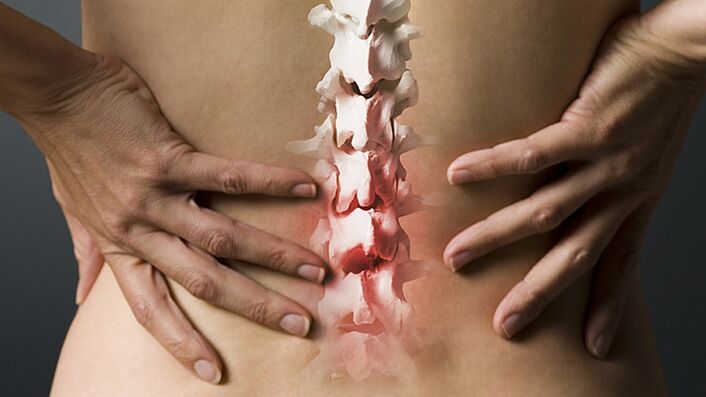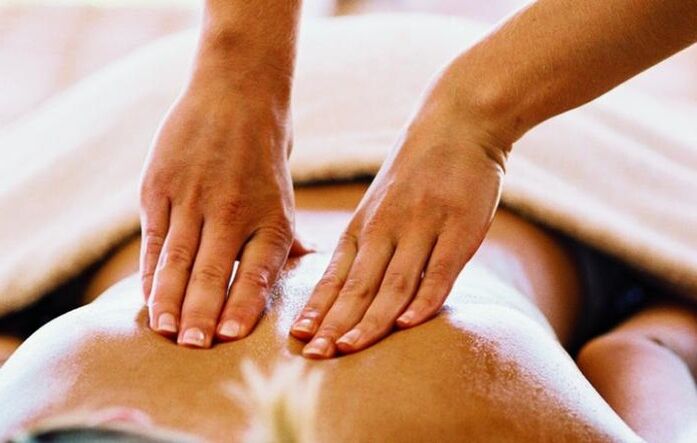
Osteochondrosis of the spine is a disease characterized by degenerative-dystrophic changes in the vertebrae and intervertebral discs.
Scientists call this disease the "disease of civilization" because it is associated with the upright posture of man in the modern world and the ever-increasing load on the spine. Osteochondrosis usually begins to develop in young people aged 20-25 years.
Reasons
The exact cause of the development of spinal osteochondrosis has not been determined. Experts point out the factors that contribute to its development.
Traumatic factor. Constant overloading of the spine (microtrauma) contributes to accelerated wear of the spinal discs. Antiphysiological postures (working in a bent position for a long time, staying in one position for a long time) cause subluxations in the intervertebral joints.
Pathology of the development of the musculoskeletal system. Straight legs, shortening of one leg, vertebral lumbarization and other similar pathologies increase the load on the spine and, consequently, accelerate the degenerative processes.
Age factor. The development of osteochondrosis of the spine is considered by many doctors as a manifestation of the natural aging of the human body.
Vascular factor. There is a link between a decrease in blood flow (ischemic processes) and the acceleration of pathological processes in the spine.
Factor in changes in hormonal levels. Natural hormonal changes in the body (pregnancy, lactation, menopause, menopause) lead to an increase in degenerative processes.
Factor of endocrine-hormonal diseases. Diseases such as obesity, diabetes mellitus, myxedema (inflammatory lesion of the thyroid gland) and others contribute to the development of osteochondrosis of the spine.
Classification and symptoms
Symptoms depend on the localization of the pathological process.
Osteochondrosis of the cervical spine. The cervical spine contains blood vessels that nourish the brain. With degenerative changes in this section, the organs of the head are not supplied with enough blood. This often leads to cerebrovascular accidents.
The main symptom of cervical spine osteochondrosis is a headache. This pain is usually persistent and worsens in the morning and with exercise. Occurs at the back of the head and gives the parietal-temporal region. Pain syndrome is often accompanied by dizziness, flashing in front of the eyes of "flies", colored spots.
In addition, nerve compression often contributes to the appearance of scalp, throat and neck pain. Pain syndrome sometimes affects the arm and shoulder. It can be weakened or strengthened by turning the head or changing the position of the body.
Symptoms of osteochondrosis of the cervical spine include:
- fluctuations in blood pressure;
- ringing in the ears, hearing impairment;
- visual impairment;
- violation of coordination of movements and gait;
- suffocation or attenuation of sound;
- rotten;
- snoring while sleeping.
Osteochondrosis of the thoracic spine. Manifestations can be different and depend on the location and severity of the disease. Compression of the thoracic nerve roots leads to intercostal neuralgia. This is manifested by severe pain in the chest, which intensifies with inhalation, some movements, coughing and laughing. Pain syndrome is exacerbated after a person stays in one position for a long time or after physical exertion. Osteochondrosis of the thoracic spine is often the cause of diseases of the stomach, lungs, heart and other human organs.
Osteochondrosis of the spine. This often strikes people who spend a lot of time in "sitting work" (computer-driven drivers).
One symptom of lumbar osteochondrosis is a painful pain that is aggravated by sudden movements (lifting weights, sneezing, coughing) and prolonged stay in one position. It is difficult to straighten the patient's back after a bent position, and sometimes severe pain even prevents him from moving. Pain is significantly reduced in the horizontal position of the body. Squatting or lying on the healthy side brings comfort.
In lumbar lumbar osteochondrosis, the pain syndrome is often localized in the lower back, spreading to the legs, sacrum, and often to the pelvic organs. As a result of awkward movements, overloading the muscles of the spine, lifting weights causes back pain. Lumbar osteochondrosis of the spine often manifests itself with impaired sensitivity, numbness in the area of pain. The patient may feel a tingling sensation, "fleeing reptiles. "Often, spasm of the blood vessels of the feet, a decrease in the temperature of the skin of the feet, and cold feet are added to the symptoms. Some patients have dry skin and peeling, sweating disorders.
If you think you have osteochondrosis of the spine and the symptoms characteristic of this disease, then you should consult an orthopedist or therapist.
Treatment

Therapy of this disease aims to relieve pain, restore spinal function, prevent the development of dystrophic pathologies in the spine.
The duration of treatment of osteochondrosis of the spine depends on the severity of the disease, the patient's age and treatment methods.
The following therapies are used in the complex treatment of the disease.
- Physiotherapy. It is one of the main methods of treating osteochondrosis. Physiotherapy exercises include exercises on joint gymnastics and rehabilitation equipment. The result is the normalization of nutrition of the intervertebral discs, metabolism, the formation of a proper muscle corset and a reduction in the load on the spine.
- Physiotherapy. This method uses lasers, ultrasound, magnetic fields, and low-frequency currents to treat the body. Due to the use of physiotherapy, the duration of treatment is significantly reduced and its effectiveness is increased.
- Massage. It is an effective way to relieve muscle pain, tension, improve blood circulation and strengthen the body as a whole.
- Manual therapy. This method of treating osteochondrosis of the spine allows you to restore normal mobility of organs, improve blood supply, lymphatic circulation and prevent exacerbation of the disease.
- Tightening of the spine. Intervertebral spaces are enlarged with the help of special equipment. This helps to restore the proper shape of the spine and relieve pain.
- Reflexology. It consists of the effect of special techniques on the acupuncture points and reflexogenic zones of the human body.
Surgical treatment of osteochondrosis of the spine is carried out due to the ineffectiveness of conservative therapy or special indications. The amount of surgery depends on the extent of the lesion and the symptoms of the disease.



































